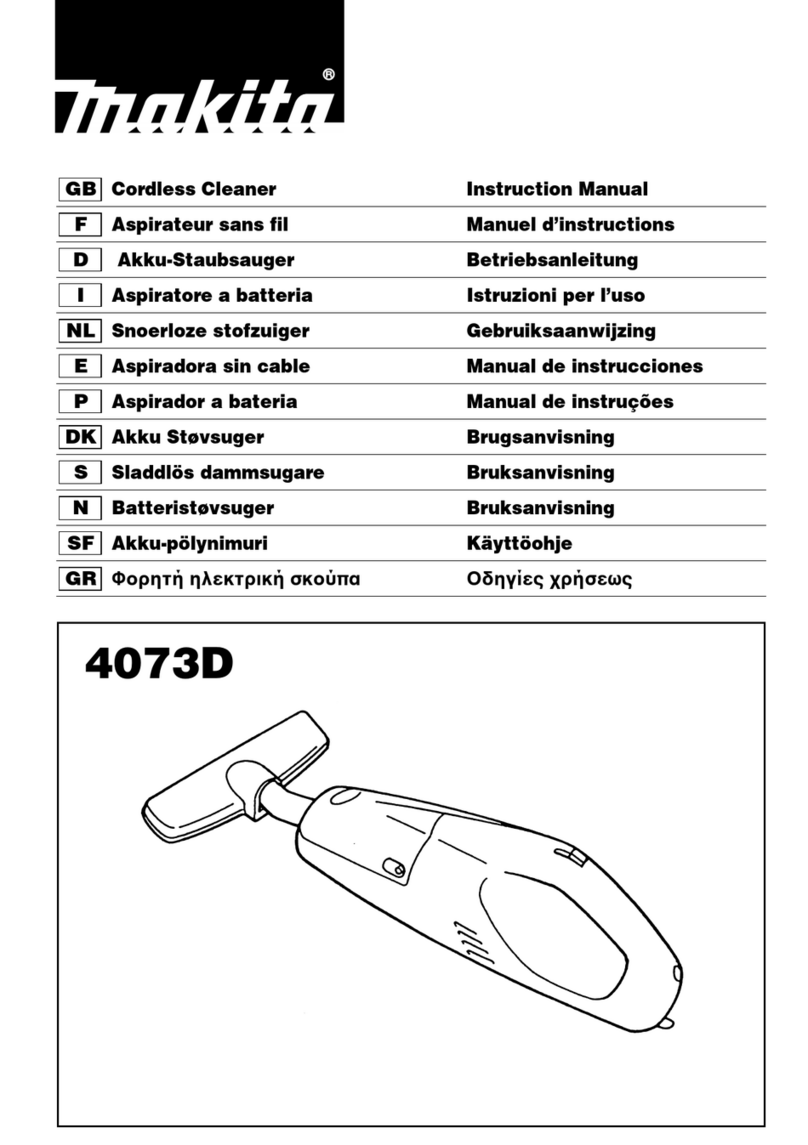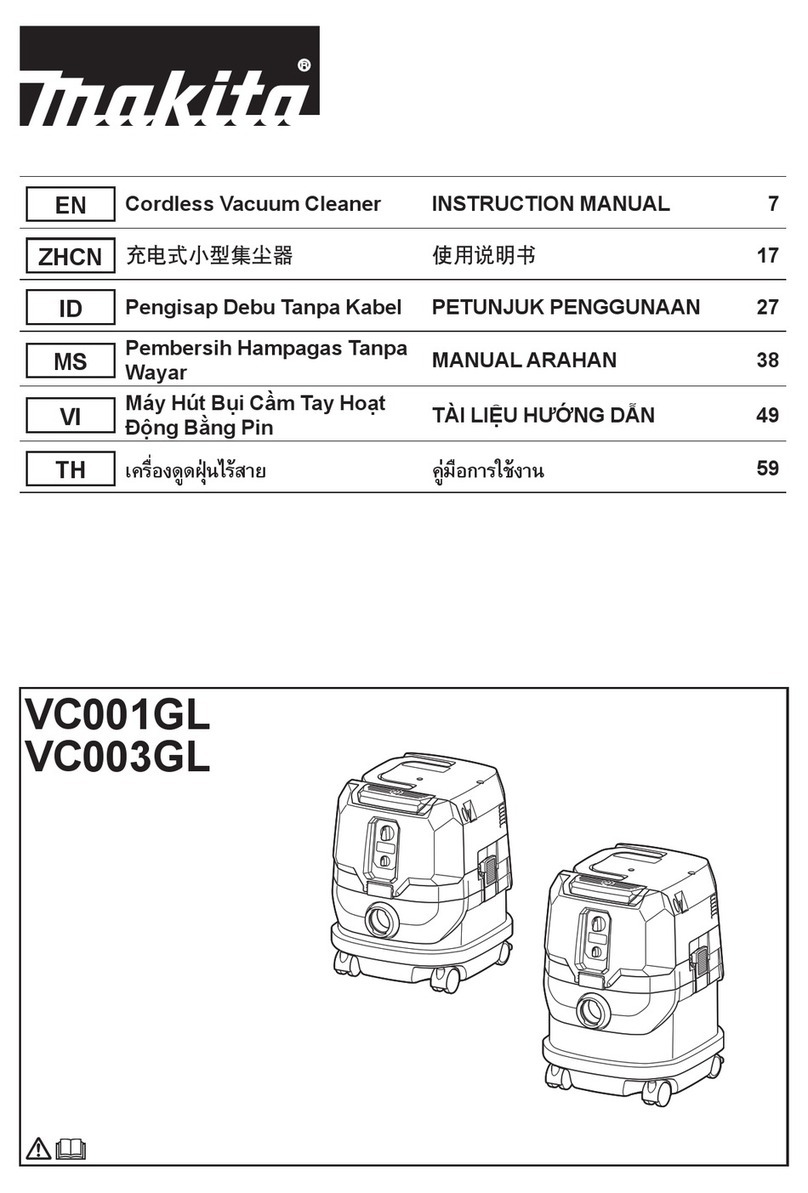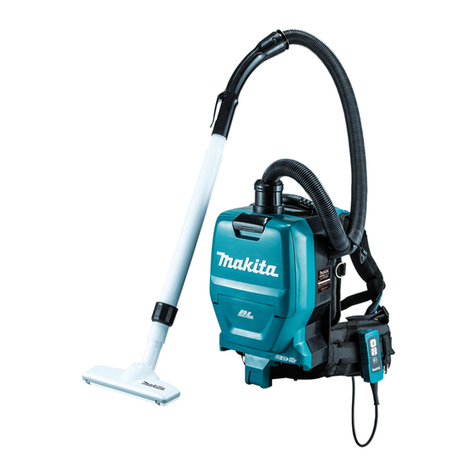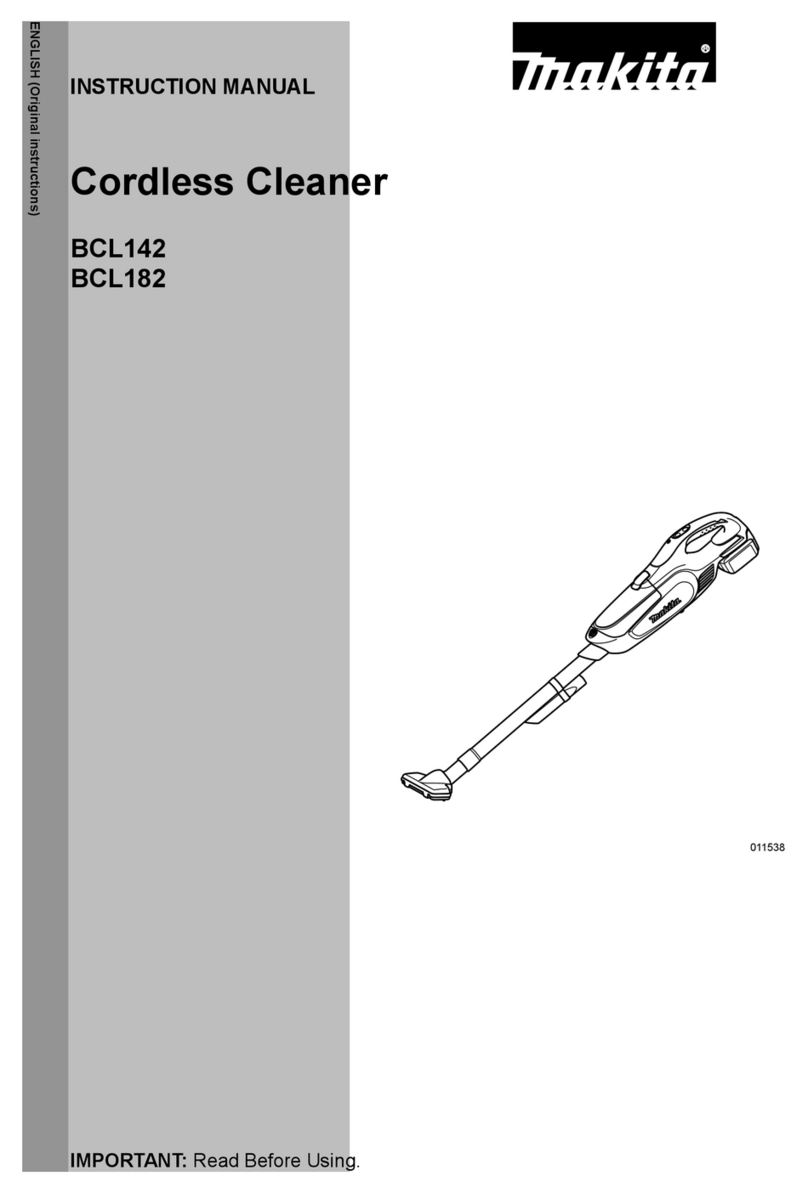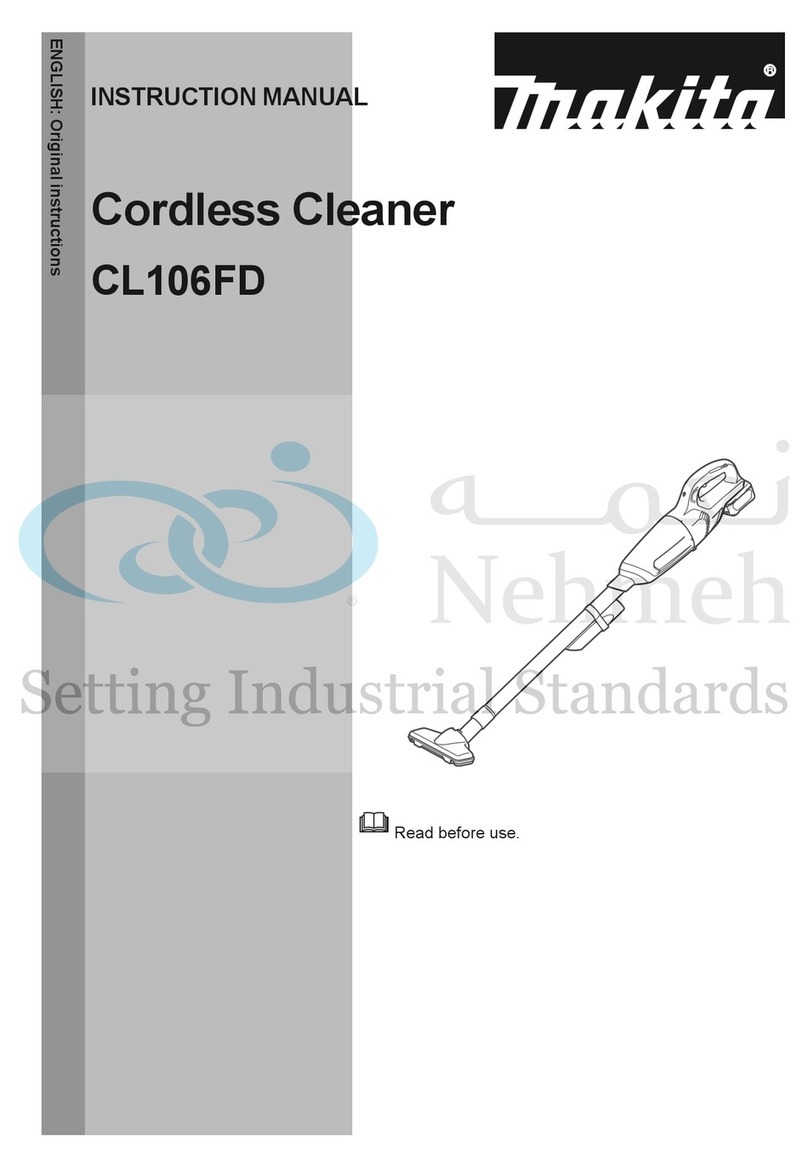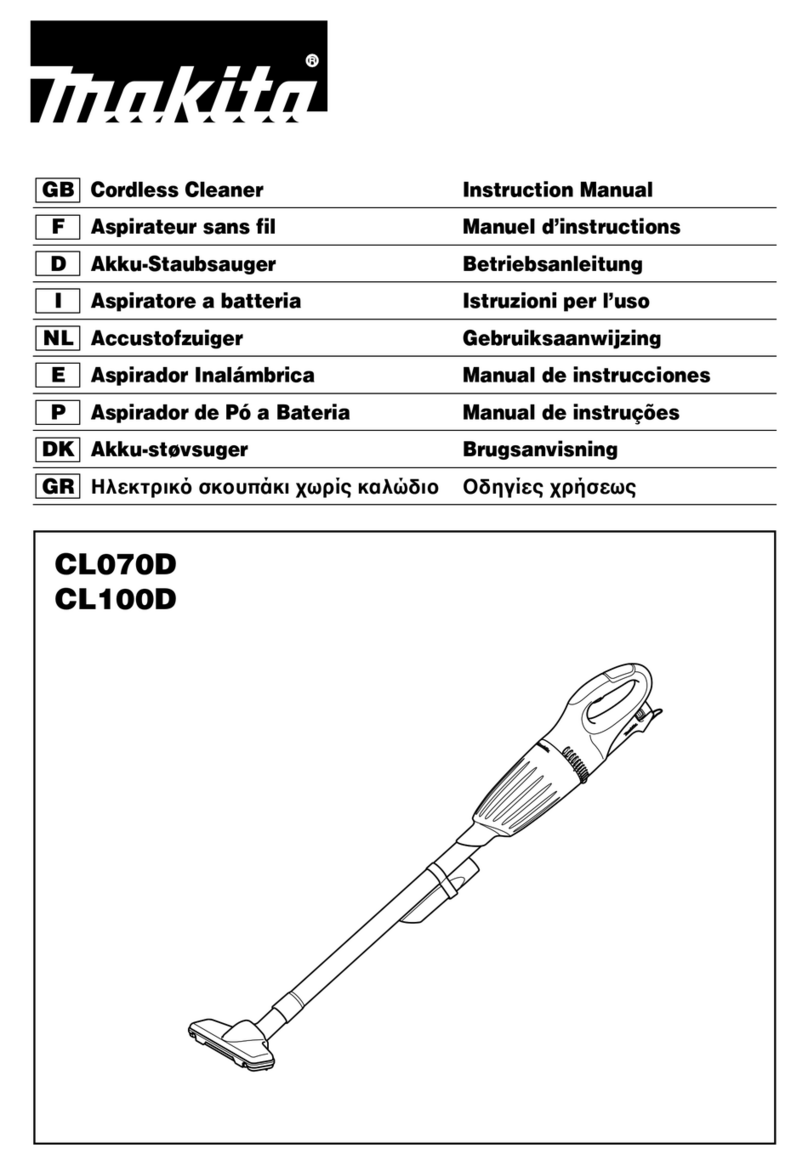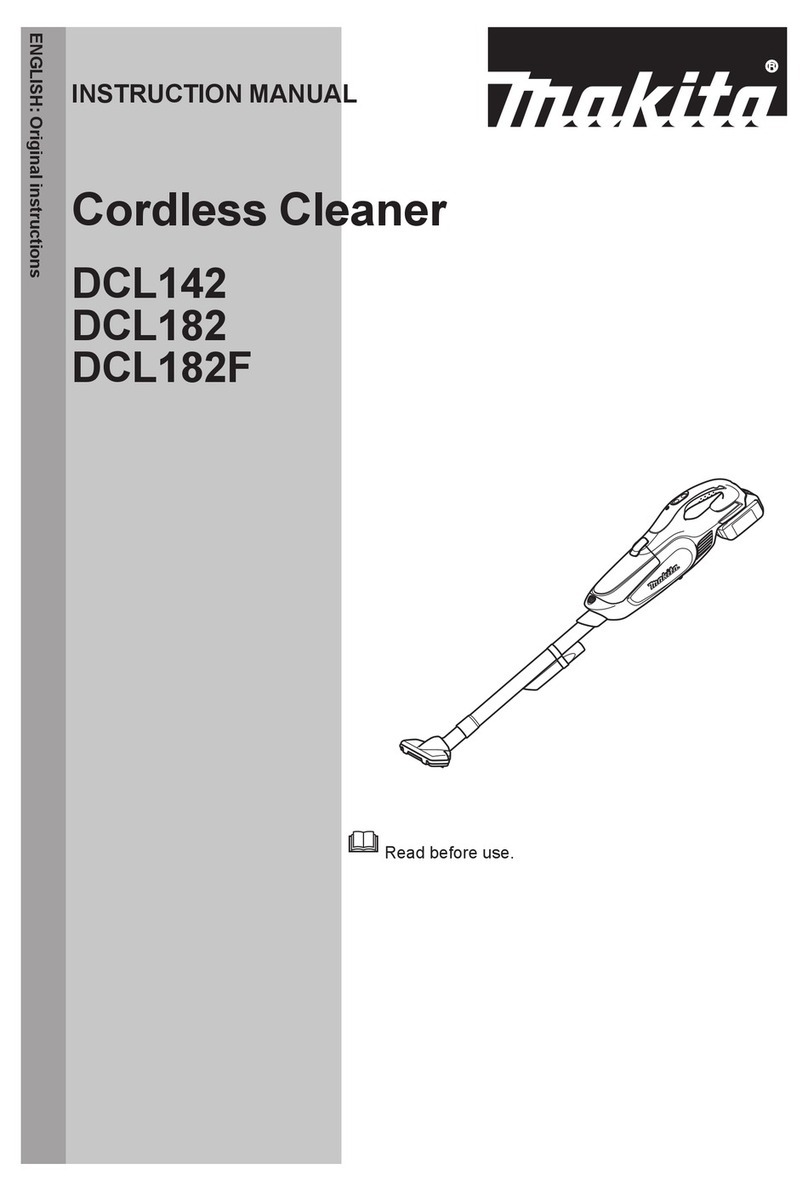
8
................... Take particular care and attention.
.................. Warning! The cleaner may contain
hazardous dust.
................... Never stand on the cleaner.
.................... Dust class L (light). The cleaners are
capable of picking up dust class L.
Follow your country’s regulations
relating to dusts and to occupational
health and safety.
.................. DOUBLE INSULATION
............ Only for EU countries
Do not dispose of electric equipment or
battery pack together with household
waste material!
In observance of the European
Directives, on Waste Electric and
Electronic Equipment and Batteries
and Accumulators and Waste Batteries
and Accumulators and their
implementation in accordance with
national laws, electric equipment and
batteries and battery pack(s) that have
reached the end of their life must be
collected separately and returned to an
environmentally compatible recycling
facility.
Intended use ENE084-1
The tool is intended for collecting both wet and dry dust.
The tool is suitable for commercial use, for example in
hotels, schools, hospitals, factories, shops, offices and
rental businesses.
Power supply ENF002-2
The tool should be connected only to a power supply of
the same voltage as indicated on the nameplate, and can
only be operated on single-phase AC supply. They are
double-insulated and can, therefore, also be used from
sockets without earth wire.
CORDED AND CORDLESS
VACUUM CLEANER SAFETY
WARNINGS ENB124-1
WARNING! IMPORTANT READ CAREFULLY all
safety warnings and all instructions BEFORE USE.
Failure to follow the warnings and instructions may result
in electric shock, fire and/or serious injury.
1. Before use, make sure that this cleaner must be
used by people who have been adequately
instructed on the use of this cleaner.
2. If foam/liquid comes out, switch off immediately.
3. Clean the water level limiting device regularly and
examine it for signs of damage.
4. Do not use the cleaner without the filter. Replace a
damaged filter immediately.
5. USE OF EXTENSION CORD. When using an
extension cord because of the great distance to
your power source, try to employ a cord that is
sufficiently thick but not too long, or cleaner
performance will be adversely affected. For
outdoor applications use an extension cord
suitable for outdoor use.
6. VOLTAGE WARNING: Before connecting the
cleaner to a power source (receptacle, outlet, etc.)
be sure the voltage supplied is the same as that
specified on the nameplate of the cleaner. A power
source with voltage greater than that specified for
the cleaner can result in SERIOUS INJURY to the
operator as well as damage to the cleaner. If in
doubt, DO NOT PLUG IN THE CLEANER. Using a
power source with voltage less than the
nameplate rating is harmful to the motor.
7. AVOID UNINTENTIONAL STARTING. Be sure
switch is OFF when plugging in.
8. Do not attempt to pick up flammable materials, fire
works, lighted cigarettes, hot ashes, hot metal
chips, sharp materials such as razors, needles,
broken glass or the like.
9. NEVER USE THE CLEANER IN THE VICINITY OF
GASOLINE, GAS, PAINT, ADHESIVES OR OTHER
HIGHLY EXPLOSIVE SUBSTANCES. The switch
emits sparks when turned ON and OFF. And so
does the motor commutator during operation. A
dangerous explosion may result.
10. Never vacuum up toxic, carcinogenic,
combustible or other hazardous materials such as
asbestos, arsenic, barium, beryllium, lead,
pesticides, or other health endangering materials.
11. Never use the cleaner outdoors in the rain.
12. Do not use close to heat sources (stoves, etc.).
13. GUARD AGAINST ELECTRIC SHOCK. Prevent
body contact with grounded surfaces. For
example; pipes, radiators, ranges, refrigerator
enclosures.
14. Do not block cooling vents. These vents permit
cooling of the motor. Blockage should be carefully
avoided otherwise the motor will burn out from
lack of ventilation.
15. Keep proper footing and balance at all times.
16. DO NOT ABUSE CORD. Never carry the cleaner by
cord or yank it to disconnect from receptacle.
Keep cord away from heat, oil, and sharp edges.
Inspect cleaner cords periodically and if damaged,
have repaired by authorized service facility.
Inspect extension cords periodically and replace if
damaged.
17. Do not fold, tug or step on the hose.
18. Stop the cleaner immediately if you notice poor
performance or anything abnormal during
operation.
19. DISCONNECT THE CLEANER. When not in use,
before servicing, and when changing accessories.
20. Clean and service the cleaner immediately after
each use to keep it in tiptop operating condition.
21. MAINTAIN THE CLEANER WITH CARE. Keep the
cleaner clean for better and safer performance.
Follow instructions for changing accessories.
Keep handles dry, clean, and free from oil and
grease.
